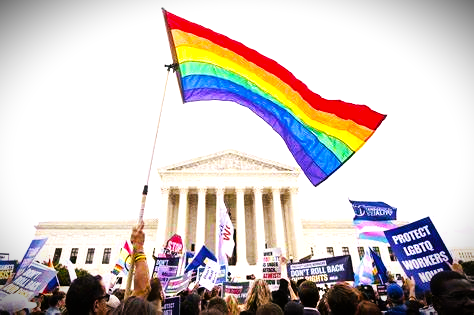In a twist that borders on dystopian satire, a Supreme Court decision aimed at “protecting women’s spaces” may have just guaranteed the very outcome its supporters feared most.
Lauded by gender-critical campaigners as a decisive victory for biological sex-based rights, the ruling mandates that individuals must use public facilities based strictly on their birth-assigned sex. But buried in the applause is a legal landmine that few anticipated trans men, including those who present as fully masculine, may now be legally required to enter women’s restrooms, changing rooms, and shelters.
Let’s spell that out.
Picture a broad-shouldered, bearded man in jeans and boots stepping into a women’s restroom not to provoke, not to protest, but because the Supreme Court told him he legally must. This isn’t a loophole. It’s the law.
For activists who fought to keep “biological males” out of women’s spaces, this outcome isn’t just ironic, it’s poetic justice with a bitter edge. The very framework they demanded now makes women’s spaces more visibly male, more legally complex, and arguably more vulnerable than ever.
And that vulnerability doesn’t stop at optics.
Legal experts are raising red flags about how the ruling could be exploited. If gender presentation is irrelevant and the only qualifying detail is birth certificate data, what’s to stop bad actors from using that rigidity as cover? How will staff or patrons differentiate a lawful trans man from someone with far more sinister intent?
The ruling was meant to build a wall. Instead, it’s torn a hole straight through the middle of one of society’s most sensitive debates.
In schools, gyms, public buildings, and shelters across the country, confusion now reigns. Trans men are being told they don’t belong in the spaces they physically match and must instead return to those they left behind. Women and girls are left wondering why a man is walking into their bathroom, and employees are caught in a legal bind with no clear playbook.
The backlash is growing louder. While LGBTQ+ advocates warn of the ruling’s harmful effects, even some gender-critical voices are now quietly admitting the plan may have backfired. Others remain defiant, calling the chaos “a necessary price for clarity.”
But clarity isn’t what we got.
What we have now is a legal fiction crashing into lived reality, a sharp reminder that identity doesn’t come with binary instructions, and that when lawmakers ignore the complex truth of human lives, they don’t create order. They create confusion, risk, and unintended consequences.
The Supreme Court sought to settle a culture war with the swing of a gavel. Instead, it has weaponized the bathroom stall and left the nation asking: what, exactly, have we just flushed into law?




